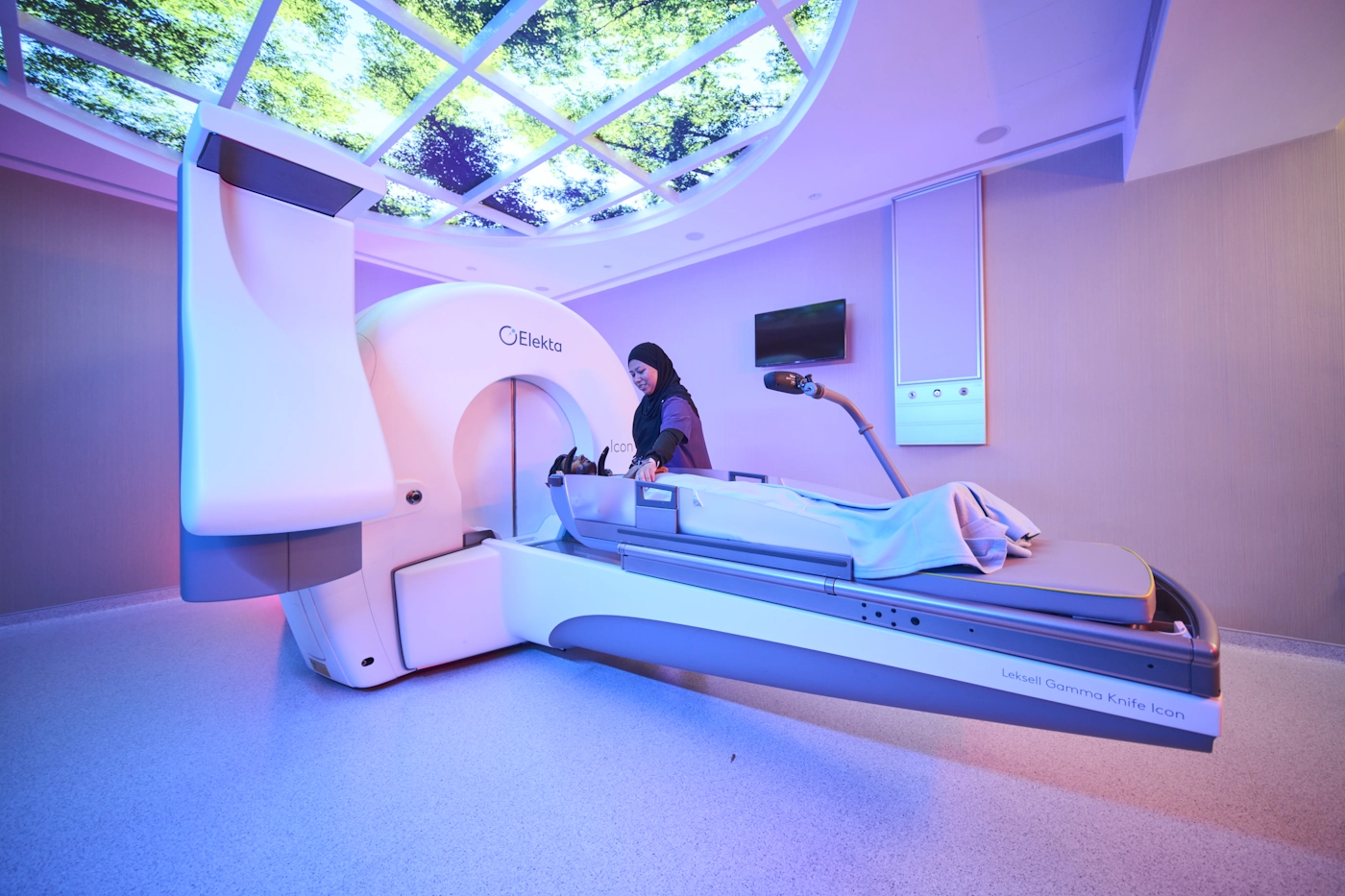

Gamma Knife surgery is a form of radiation therapy that precisely converges hundreds of individual laser beams at a tumour. It uses computerised treatment planning software to help physicians locate and irradiate small targets within the head and brain with high precision. Gamma knife treatment delivers intense radiation doses to the target area while sparing surrounding healthy tissues. It is often used as a complementary or alternative treatment to chemotherapy, surgery, and other forms of radiation oncology.
High accuracy and precision: Allows a powerful dose
of radiation with lower toxicity to healthy surrounding
tissues.
Non invasive: As there is no incision done, there
is less risk of complications due to bleeding, infection, or
cerebrospinal fluid leakage.
Painless and fast recovery: No rehabilitation is
necessary and patients can resume activities in a short amount of
time.
Zero or minimal hospital stay: Treatment is often
done on an outpatient basis and occasionally requiring an overnight
stay.
A: When the head frame is being fitted, you will have injections of local anaesthetic and may feel some pain (from the injections). The actual gamma knife treatment is totally painless.
A: Scanning and gamma knife treatment will take up most of the day. The time you actually spend in the gamma knife machine will depend on the size of the target area and how many ‘shots’ are needed. Time can range from 30 minutes to several hours.
A: No.
A: The only sensation you will feel is pressure from the head frame pressing on your scalp. You may also be aware of a flashing red light in the room which indicates treatment is taking place.
A: This is unlikely to happen. However, if the area being treated is close to the skin surface, then hair loss may occur in that place.
A: Generally, changes in the targeted cells take
place
over many months. You will need regular follow-ups
and
MRI scans to monitor any change. You will be seen by
your consultant four weeks after treatment and have
an
MRI scan six weeks after treatment if you are being
treated for cancer.
Those with benign tumours will be seen six months
after
treatment and an MRI scan will be booked
accordingly.
A: As soon as you feel fit enough to do so. This may be the day after treatment, or it may take a few days.


